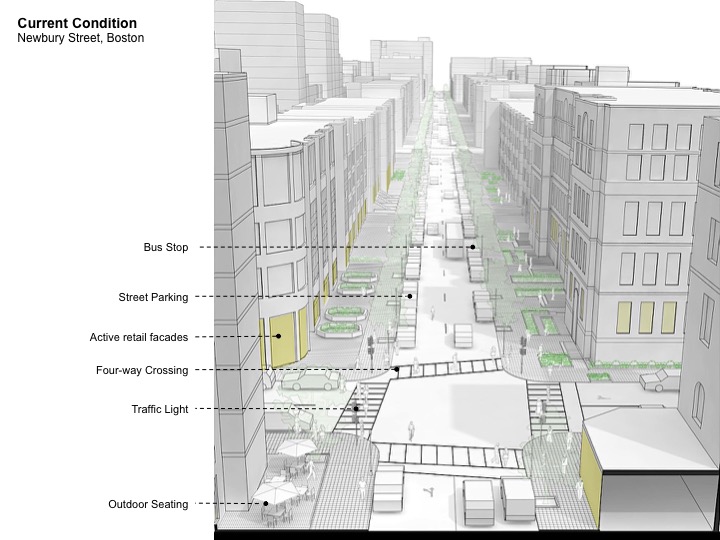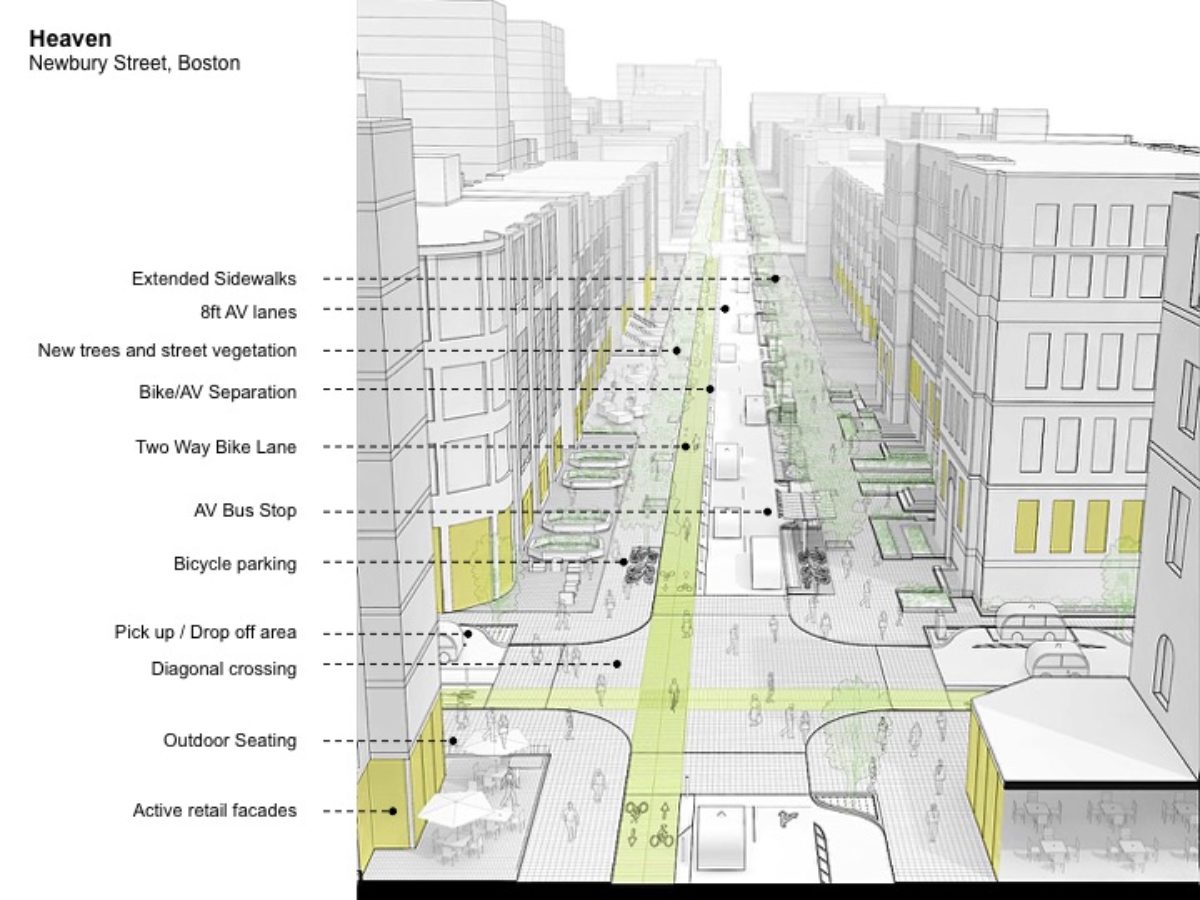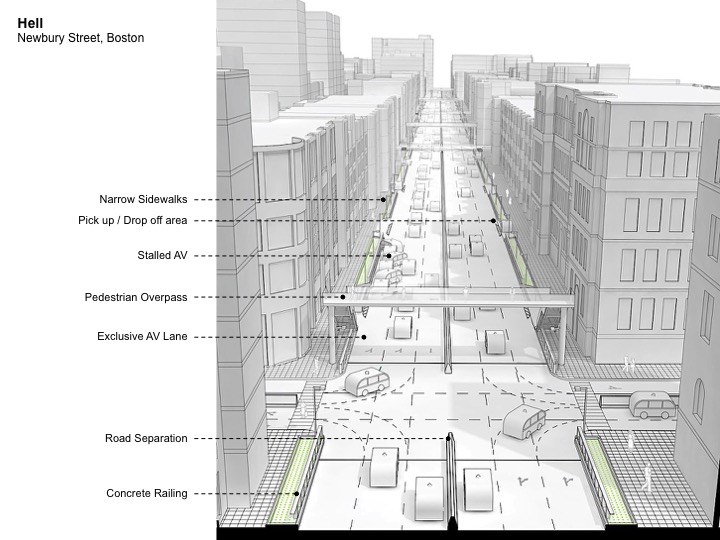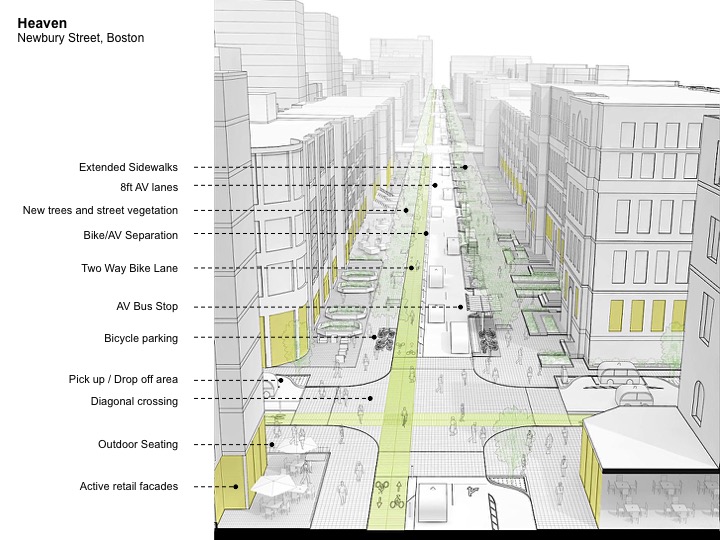As a researcher, the Harvard Graduate School of Design’s Andres Sevtsuk has been immersed in questions of urban mobility. His work as assistant professor of urban planning and as principal investigator at the City Form Lab covers topics involving urban design and spatial analysis, real estate economics, transit and pedestrian oriented development, and spatial adaptability, among others.
Most recently, Sevtsuk has engaged these issues and angles in an investigation of autonomous vehicles. Last year, he and the GSD’s Diane E. Davis launched the Future of Streets research project through the City Form Lab, with the intention of studying how cities might adapt streets to newly emerging transportation technology—ride-sharing, as well as electric and autonomous vehicles—in ways that maximize multi-modal, socially inclusive, and environmentally sustainable outcomes. The project is run in partnership with the planning and transportation departments of Los Angeles and Boston and will feature research and studios in both cities.
Sevtsuk had the opportunity to preview some of this work during a keynote address at the Strategic Visioning Workshop on Autonomous Vehicles in Minnesota conference this June. The conference gathered city and state transportation officials and other experts to take up questions around what the state can do to be well-positioned on autonomous-vehicle deployment within the next decade, and to discuss vision-driven considerations like land use, environmental considerations, traffic operations and safety, and equity.
Sevtsuk’s keynote addressed possible impacts of autonomous vehicles on the streets of Boston and Los Angeles. To suggest and illustrate these potentials, Sevtsuk presented extreme “heaven” and “hell” scenarios of a post-AV urban landscape in each city. On Boston’s Newbury Street, Sevtsuk showed a “heaven” situation offering extended pedestrian sidewalks, narrow lanes for AVs, new trees and street vegetation, and two-way bike lanes. The “hell” scenario, meanwhile, involved narrow sidewalks, congested traffic, broken-down AVs and degrading street commerce on downtown streets that has fallen victim to a new wave of suburban sprawl.

At Los Angeles’s Vermont/Santa Monica intersection, Sevtsuk’s “heaven” plan included improved public transport systems, shared AV pick-up and drop-off zones, continuous bike lanes, and active retail facades and street vegetation. In opposition, the potential “hell” scenario included, as on Boston’s Newbury Street, an AV-exclusive freeway prone to being blocked by a broken-down AVs, an elevated highway for private AVs, drive-indoors (as opposed to drive through) restaurants as well as railings and Jersey barriers to prevent pedestrian crossings.
The purpose behind these contrasting scenarios of potential AV futures, Sevtsuk says, is to suggest that policy makers, designers and planners need to act now in order to “nudge the future towards ‘heaven.’”

Sevtsuk also offered two other recent presentations on similar topics: a keynote at the Creative Impact Conference, as part of Tallinn Music Week in Tallinn, Estonia, and UNICEF’s “Making Cities Safe and Sustainable for Every Child” conference in Surabaya, Indonesia.
Last fall, the Harvard Gazette profiled Sevtsuk’s research on urban walkability and the factors that make certain city blocks more or less walkable and accessible.
Sevtsuk has collaborated with a number of city governments, international organizations, planning practices, and developers on urban designs, plans, and policies in both developed and rapidly developing urban environments, most recently including those in Indonesia and Singapore. He is the author of the Urban Network Analysis toolbox, which is used by researchers and practitioners around the world to study coordinated land use and transportation development along networks. He has led various international research projects; exhibited his research at TEDx, the World Cities Summit, and the Venice Biennale; and received the President’s Design Award in Singapore, International Buckminster Fuller Prize, and Ron Brown/Fulbright Fellowship.
Sevtsuk was previously an Assistant Professor of Architecture and Planning at the Singapore University of technology and Design (SUTD), and a lecturer at MIT.




